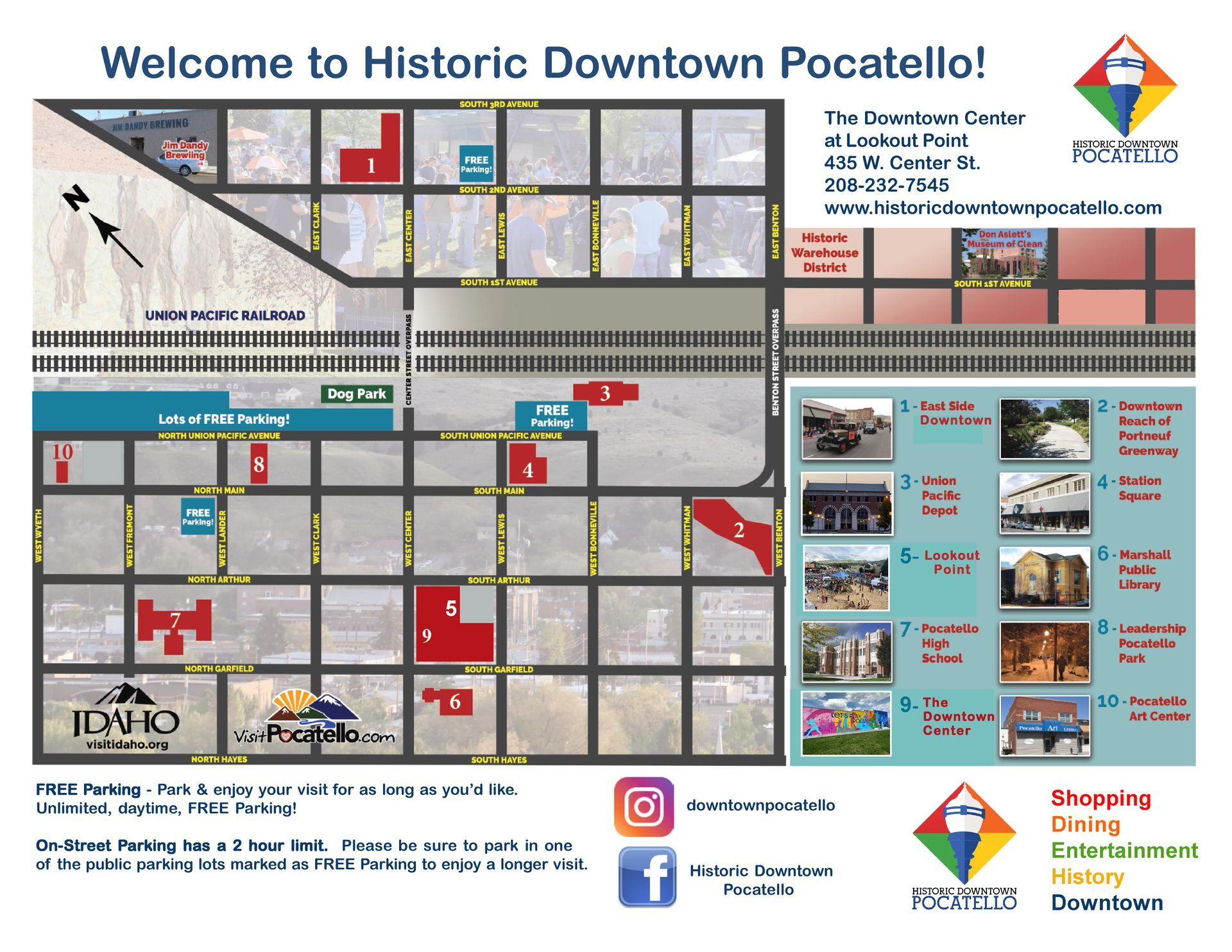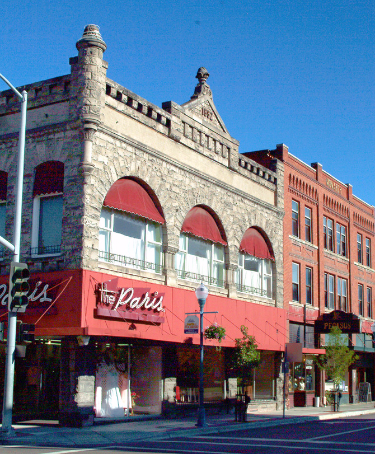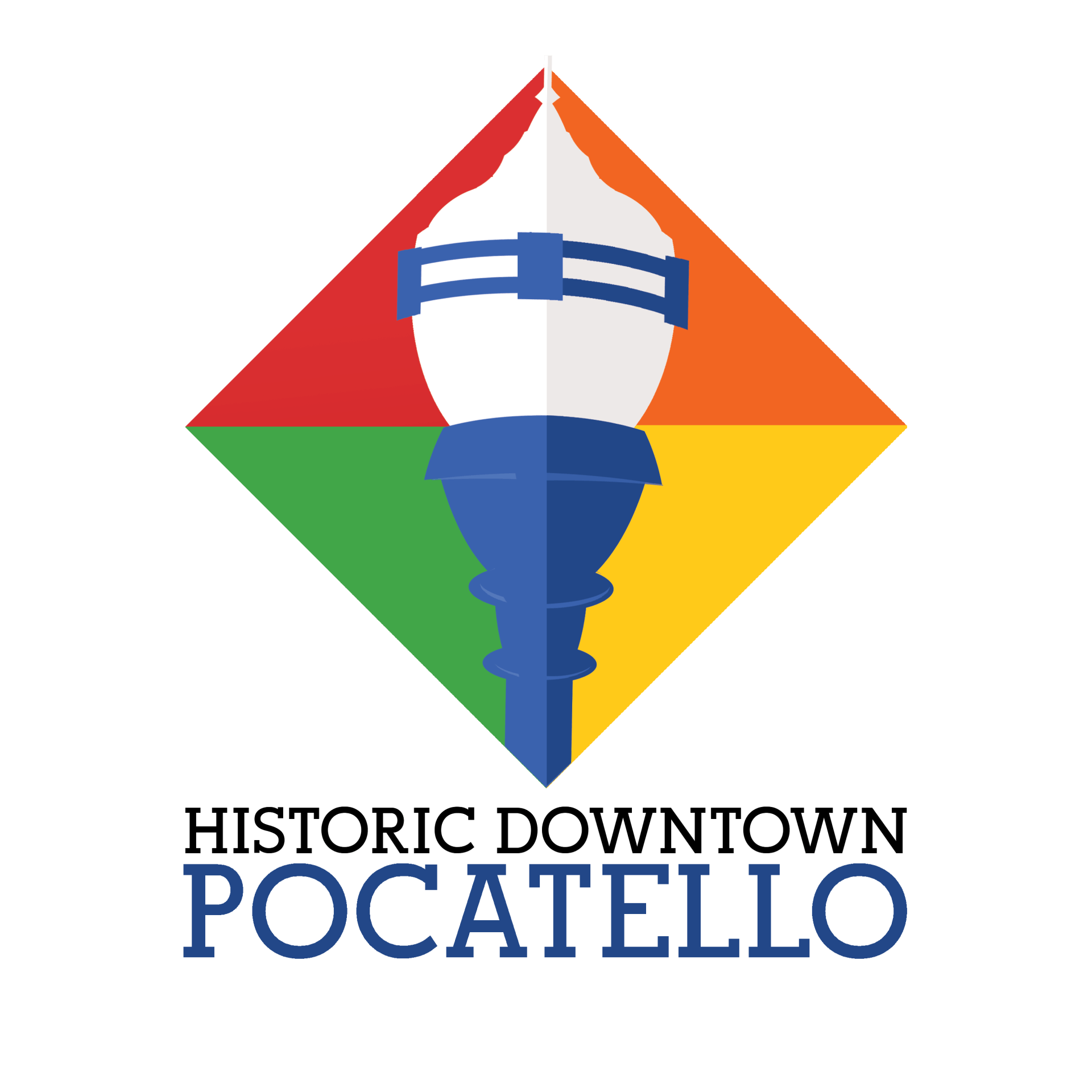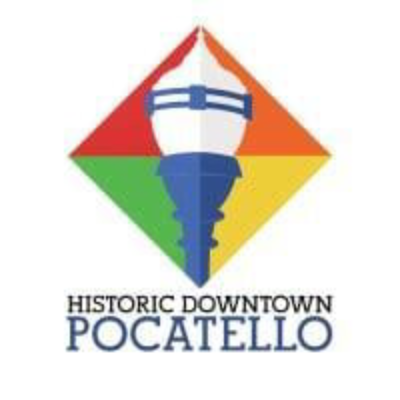Explore Historic Downtown Pocatello
There's so much to see and do Downtown! Shop, Dine & Play in Historic Downtown Pocatello! With over 200 locally owned, small businesses, we have exactly what you are looking for! Shopping, dining, entertainment, public art, and more!
Parking and Map of Downtown Pocatello
Free Parking - Park & enjoy your visit for as long as you'd like. Unlimited, daytime, FREE Parking (indicated on the map below).
On-Street Parking has a 2-hour limit. Please be sure to park in one of the public parking lots marked as FREE Parking to enjoy longer visit.

Photo Gallery
Historical Guide
So much to learn & so much history!
Historic Downtown Pocatello is the heart of our community, and the heart still beats strong!
Judy Garland sang about it in a "Star Is Born."
It's mentioned in Sam Peckingpah's "Ride The High Country."
And Ken Maynard played dual roles in "The Pocatello Kid."
But Pocatello wasn't invented by the movies.
Pocatello was the real West.
After all, Butch Cassidy and Sundance Kid robbed their first bank not far from here, which was in Wilcox Wyoming. Butch Cassidy had actually robbed a bank in Montpelier Idaho before he had met up with Sundance and stole around 500,000 dollars’ worth of silver and gold.
A rough n' tumble railroad town, Pocatello began life at the crossroads of the Oregon and California Trails. With its share of saloons, opium dens, houses of ill repute and a complex network of tunnels with underground escape routes, the town attracted more than a few colorful people. Names like Hattie Dell, Colonel Steptoe, Dare Devel Dick and Montana Charlie frequently made news on the front page of The Pocatello Tribune, usually on the wrong side of the law.
Pocatello also sported its fair share of culture. Many opera houses (including The Princess Theater where Judy Garland's character in "A Star Is Born" was "born in a trunk"), a substantial high school and by 1903, the beginnings of what would become Idaho State University. Over the years, The Auditorium, The Lyric, The Center Street Orpheum, The Gem & Star, The Crown, The Rex, and The Capitol opened to entertain the growing population. Although none still exist as theaters, some of the buildings are still standing.
Much of what was.... still is. Look at the rooflines of many of the buildings along Main and Center Streets and you'll see dates: 1892, 1900, 1903, 1905. You'll see names: Franklin, Carlyle, Lewis and Sonnenklab. And you'll see relics of social groups long gone and some still in existence: WOW (Woodsmen of the World), and IOOF (Independent Order of Odd Fellows). This City was built by folks who proudly left their mark on the buildings they constructed.
These buildings still live. Not as museums, or as a homage to the past; but as a working marriage of historic beauty and modern functionality.
A Treasured Past!
Pocatello is a unique city, not only in the name it shares with no other, but because of its Historic Downtown District. This district is architecturally and historically significant and is one of the region's most diverse and well-preserved urban streetscapes. Founded in 1882 and named for a chief of the Shoshone-Bannock Indian tribe, Pocatello began as a collection of boxcars and construction workers' tents on the Indian reservation where 40 acres had been set aside for the railroad. A special act of Congress on September 1, 1888 created the original town site and a temporary business district was developed.
Pocatello owes its foundation and much of its continued development to the railroad industry. With the construction of the Utah, Northern route in 1878 and the Oregon Short Line in 1882, Pocatello's future as a north-south junction point became assured. The appellation of "The Gate City" was acquired because of Pocatello's early importance as a junction point and rail route through the mountains.
The Downtown Historic District encompasses all or part of eighteen city blocks and is composed primarily of two and one-story commercial buildings. The primary building material throughout the district is brick, although hand-hewn stone and terra cotta were also used. The predominant facade line on the top of many second floors is accentuated by sheet metal cornice. A variety of architectural styles is represented in the district, including Gothic Revival, Romanesque Revival, Sullivanesque, and Art Deco, as well as many adaptations of early 20th century commercial styles with classical details rendered in either sheet metal or terra cotta.

Alive Today!
The historic buildings in Historic Downtown Pocatello are alive today with activity. With a collection of restaurants, shops, art galleries, and more, visitors to Downtown can experience our rich history with all of the conveniences of modern day living. Come see for yourself!
History of the Business Improvement District
Long-term community commitment to the revitalization of Historic Downtown Pocatello was demonstrated when City Ordinance No. 2390 was adopted in 1991, establishing the Downtown Business Improvement District (BID). BIDs are a popular economic development tool used by communities across the country; the form they take is dictated by state law. The Downtown BID was created by the Pocatello City Council in response to a petition of downtown property owners who agreed to pay a yearly assessment based on the 1990 value of their properties. Every year since then, the City Council has contracted with Historic Downtown Pocatello to manage and administer revenues collected from the BID, establishing a long-term funding source for the implementation of a comprehensive program. The purposes of the BID, according to the ordinance, are:
- Hiring staff as needed for the district to assist in general promotion of trade and business activities in the district (includes costs of rent, utilities, supplies, postage, and equipping an office with suitable equipment and furnishings).
- Capital improvements (physical improvement and decoration of public space in the district, including, but not limited to landscaping, facade improvements, and so forth).
- New business development (travel, recruitment, meals).
- Promotion of public events which will take place within the district.
- Acquisition, construction, or maintenance of parking facilities for the benefit of the district.
- Operation of transportation services to promote retail trade activities within the district.
The Downtown BID encompasses the historic buildings to the immediate east and west of the Center Street underpass. On the west side of the tracks, the BID roughly stretches from Wyeth to Whitman, U.P. Avenue to Garfield. On the east side, the BID boundaries form a square around East Center: First Avenue to Third Avenue, Clark to Lewis. Property owners within the Downtown BID form the membership of Historic Downtown Pocatello and have voting rights within the organization.


























































